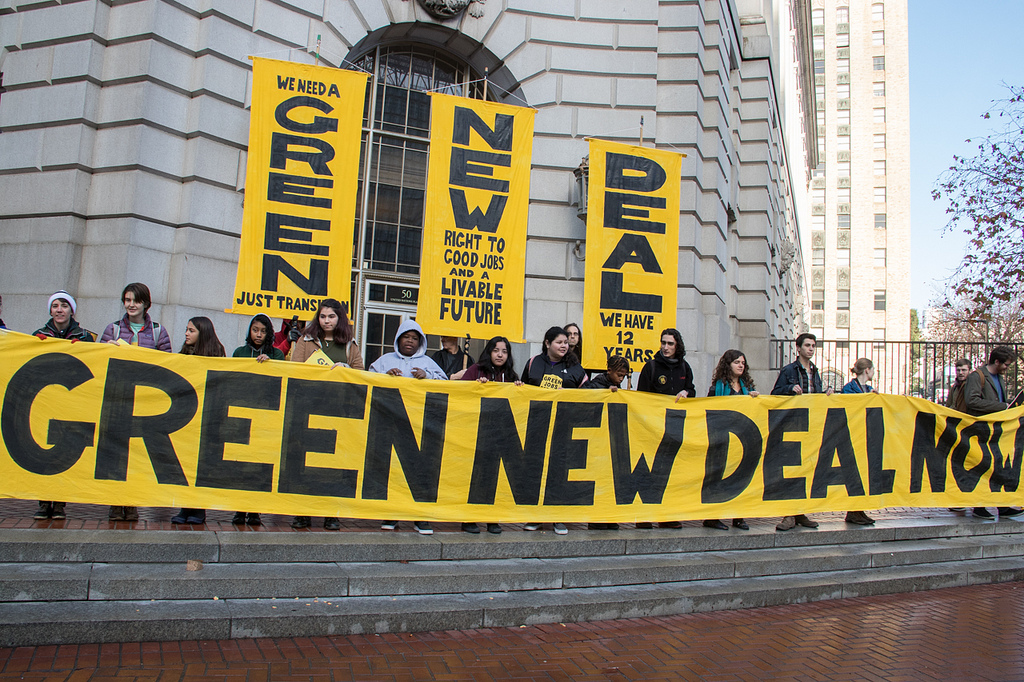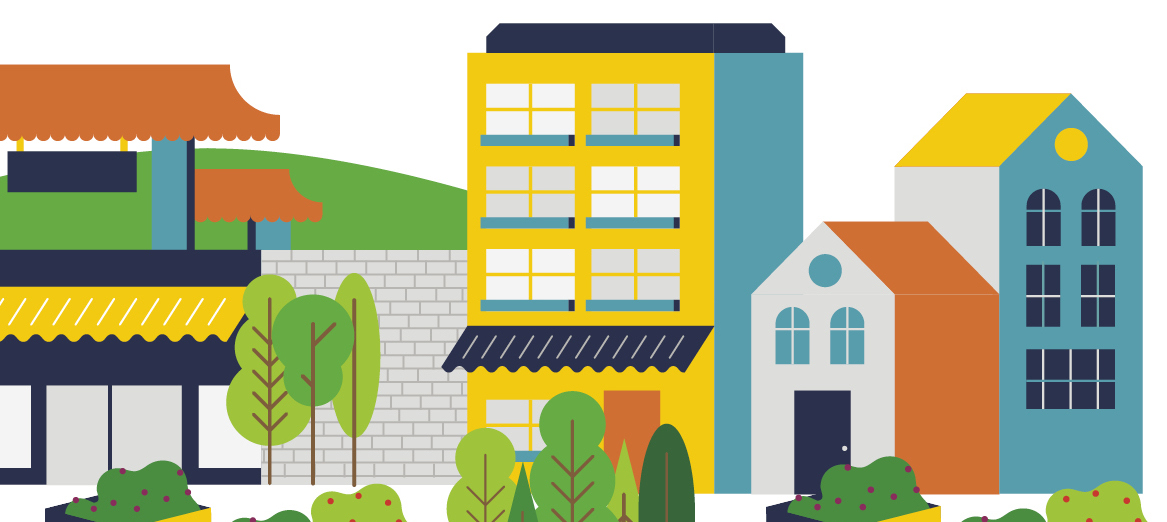By Got Green & Puget Sound Sage
Photo by Peg Hunter
Got Green and Puget Sound Sage are excited by the opportunity the Green New Deal presents to build good jobs, clean our air and water, and leave a healthy planet for future generations. We know what a Green New Deal looks like locally, because we’ve been working on it in coalition with our partners at SouthCORE, Front & Centered, and The Alliance for Jobs and Clean Energy.
Community control of development, affordable housing, rooted communities, living-wage jobs, public transportation, healthy food, renewable energy, clean air, water, and land, and corporate accountability are the components of a Green New Deal. Community connection is how people survive and bounce back from emergencies. Strengthening community cohesion is a climate adaptation and resilience strategy.
Got Green and Puget Sound Sage recommend substantial investment from the federal, state, and local level to kick start, support, and scale up frontline community-led work on:
Living-wage jobs that benefit or conserve the environment and preserve or expand environmental health for workers and the surrounding community
Living-wage and unionized jobs in the renewable energy and building trades sectors
Renewable, local energy infrastructure, including solar, wind, battery-storage, and other community-owned and -driven energy solutions
Rapid, convenient, affordable, and electrified public transportation
Energy-efficient, affordable housing and capacity to weatherize existing housing stock
Support for workers and businesses transitioning out of the fossil fuel industry and into renewable energy or other industries, including job training and pension security
Support with energy bills, weatherization, and transportation costs for low-income people
Subsidies going to support the fossil fuel industry must be phased out and reinvested into renewable energy. Resource investment and infrastructure development must prioritize communities most impacted by the damaged climate and ongoing pollution. Also, frontline communities need to have power over how development occurs and how resources are deployed because they know what solutions will be most effective at addressing the problems in their community.
A Green New Deal for Seattle must not include cap-and-trade or carbon market-based policies, harmful geotechnologies, or energy produced from fracked gas and nuclear power. Cap-and-trade policies do not eliminate carbon emissions 1 2 3, fracked gas produces unacceptable carbon emissions 4 5 and earthquakes 6 7, and nuclear power produces deadly byproducts 8 9 10.
All of these policies and fuel sources harm frontline communities and workers at sites of extraction and production, and pollute our air, water, and land. Their use is unnecessary when we have renewable energy options increasingly available for our use and development.
We have a plan for how to build healthy, resilient communities in Seattle and beyond. We call on our city to set an example for the nation by modeling what it looks like to invest in and follow the lead of local communities on the frontlines of climate change and ongoing pollution.
Join us in building a future we are proud to pass on to our children.
See more of Peg Hunter’s photos here. Photo license: https://creativecommons.org/licenses/by-nc/2.0/
1 Four Years In, What Can We Learn from California’s Cap and Trade Program, Front and Centered, 2016, https://frontandcentered.org/four-years-in-what-can-we-learn-from-californias-cap-and-trade-program/. Accessed 20 Mar. 2019.
2 Cushing L, et. al., A Preliminary Environmental Equity Assessment Of California’s Cap-and-Trade Program, – USC Dornsife.” 2016, https://dornsife.usc.edu/PERE/enviro-equity-CA-cap-trade.
3 Cushing L, Blaustein-Rejto D, Wander M, Pastor M, Sadd J, et al. (2018) Carbon trading, co-pollutants, and environmental equity: Evidence from California’s cap-and-trade program (2011–2015). PLOS Medicine 15(7): e1002604. Retrieved September 2018, https://doi.org/10.1371/journal.pmed.1002604
4 Fracked Gas, PSR – Physicians for Social Responsibility. https://www.psr.org/issues/environment-health/fracked-gas/. Accessed 20 Mar. 2019.
5 Howarth, R.W., Santoro, R. & Ingraffea, Methane and the greenhouse-gas footprint of natural gas from shale formations, A. Climatic Change (2011) 106: 679. https://doi.org/10.1007/s10584-011-0061-5, https://link.springer.com/content/pdf/10.1007%2Fs10584-011-0061-5.pdf.
6 Ellsworth, W.L., Injection-Induced Earthquakes, Science, Jul 2013, Vol. 341, Issue 6142, 1225942. DOI: 10.1126/science.1225942
7 National Research Council. 2013. Induced Seismicity Potential in Energy Technologies. Washington, DC: The National Academies Press. https://doi.org/10.17226/13355. https://www.nap.edu/catalog/13355/induced-seismicity-potential-in-energy-technologies.
8 Barron, R.W, Hill, M.C., A wedge or a weight? Critically examining nuclear power’s viability as a low carbon energy source from an intergenerational perspective, Energy Research and Social Science Vol. 50, 7-17, 2019, https://doi.org/10.1016/j.erss.2018.10.012.
9 Wheatley S., Sovacool, B., Sornette, D., Of Disasters and Dragon Kings: A Statistical Analysis of Nuclear Power Incidents and Accidents, Risk Analysis, Vol. 37 Issue 1, 99-115, 2017, https://doi.org/10.1111/risa.12587
10 Nuclear Power and the Environment – Energy Explained, U.S. Energy Information Administration, https://www.eia.gov/energyexplained/index.php?page=nuclear_environment., 2019



